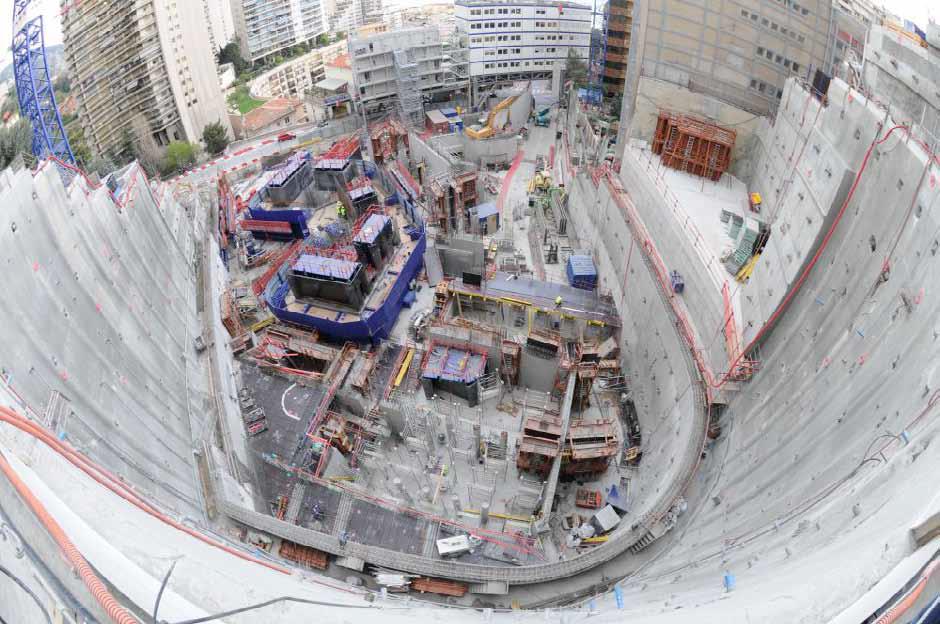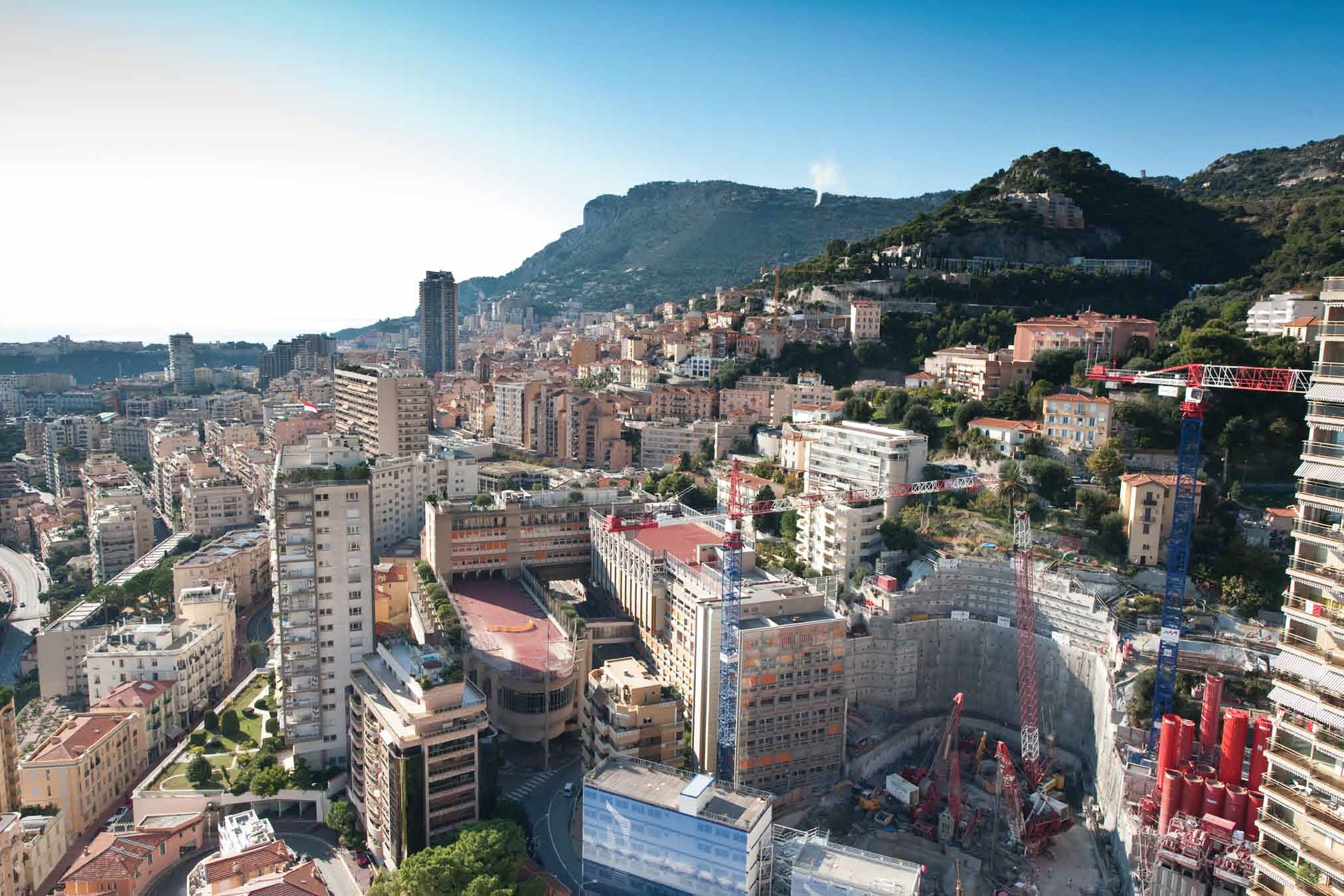

With 36,000 inhabitants on its 2 square kilometres, Monaco is already very densely populated and is seeking expansion solutions. Major and costly projects have reclaimed land from the sea, but the most recent urban development, the 170-metre Odéon Tower, Monaco’s highest building, marks a return to vertical construction.
Building a skyscraper on a hillside
The construction of the Odéon Tower involved a dual challenge: erecting a tall building on a hillside and not damaging existing buildings.

Construction site of the Odéon Tower, Monaco
© Cedric Helsly

Retaining structure of the Monaco hill
before the construction of the tower
© Cedric Helsly
Foundations have to be built on flat ground. To do this, it was necessary to:
The tower’s first storeys and basement levels were built simultaneously to save time.
To stabilise the concrete walls and prevent land slippage, 500 anchor cables, each 30 metres long, were inserted into the hillside.
These steel cables were inserted in drill holes. The head of the cable was fixed into the wall and the other end was set in a “bulb,” approximately 10 metres long, created by injecting cement into a cavity. In order for the cable to act as an anchor, the “bulb” has to be set in a stable part of the hill, beyond any fissures caused by the excavation. The cable is then put under tension to create the traction that holds the wall against the hillside and ensures its stability.